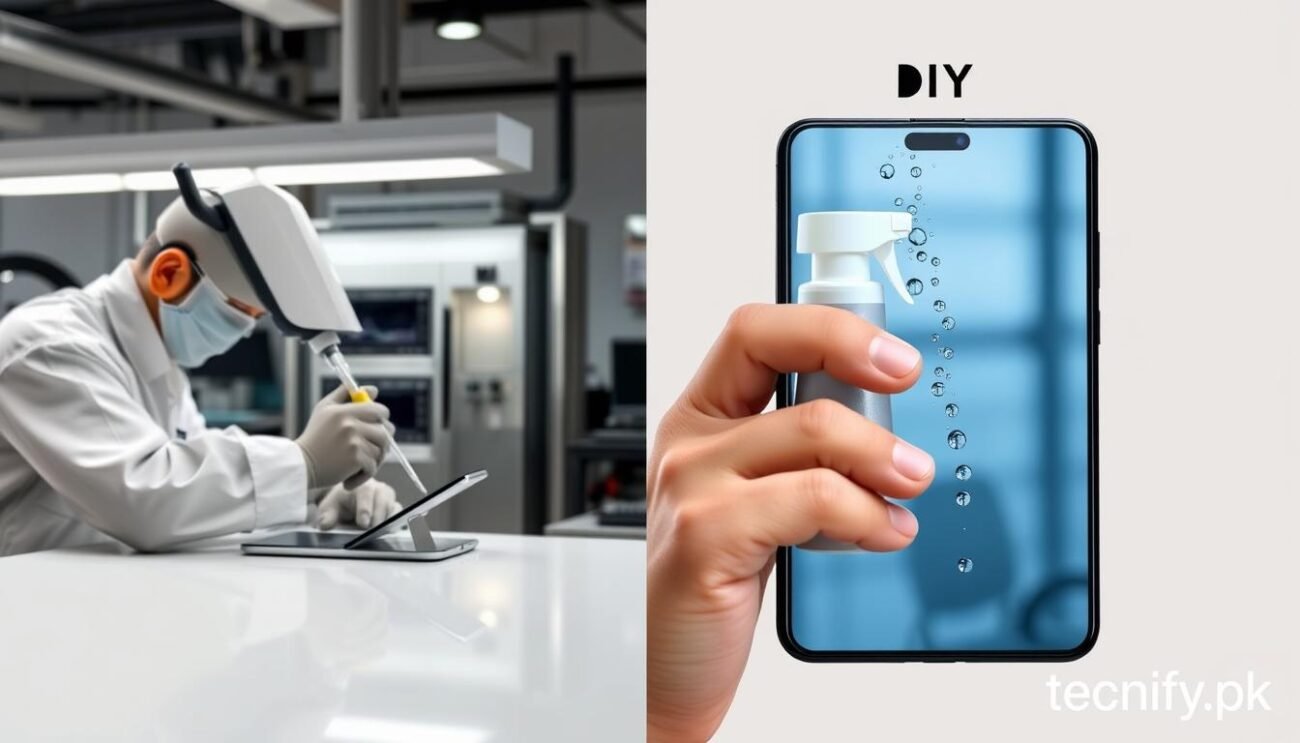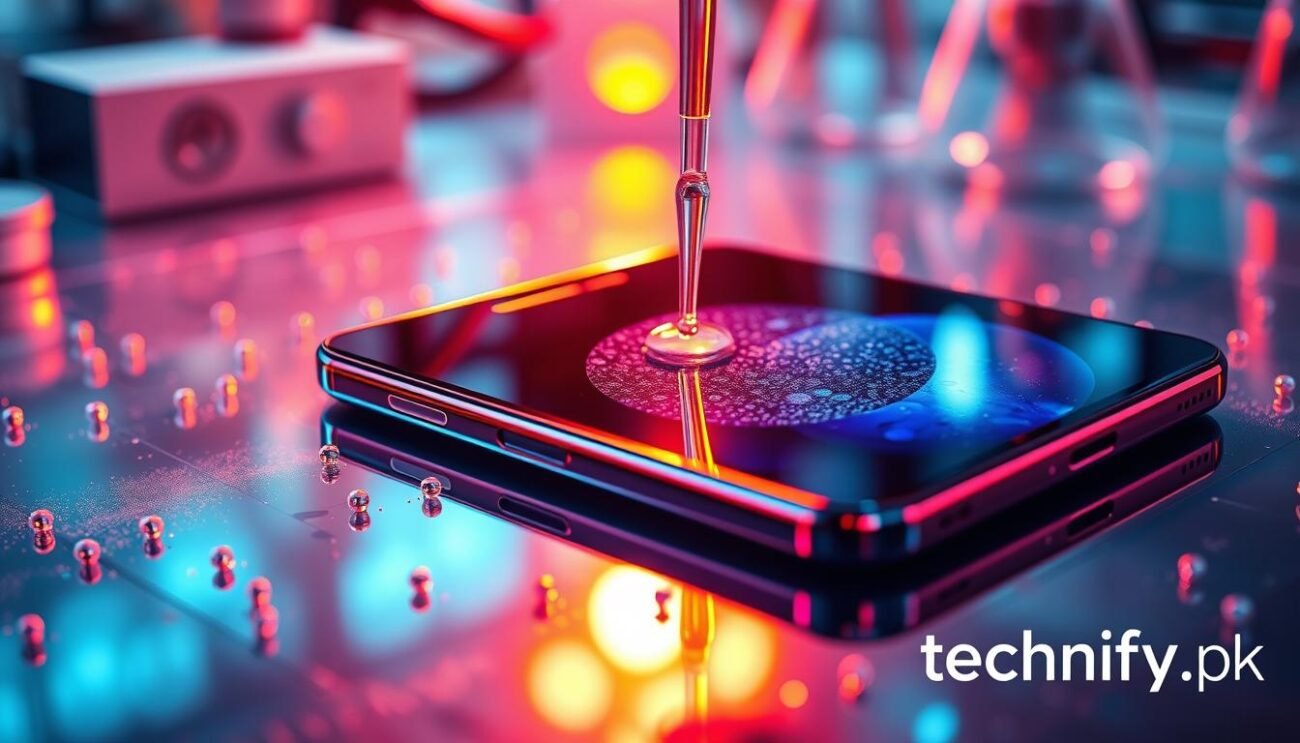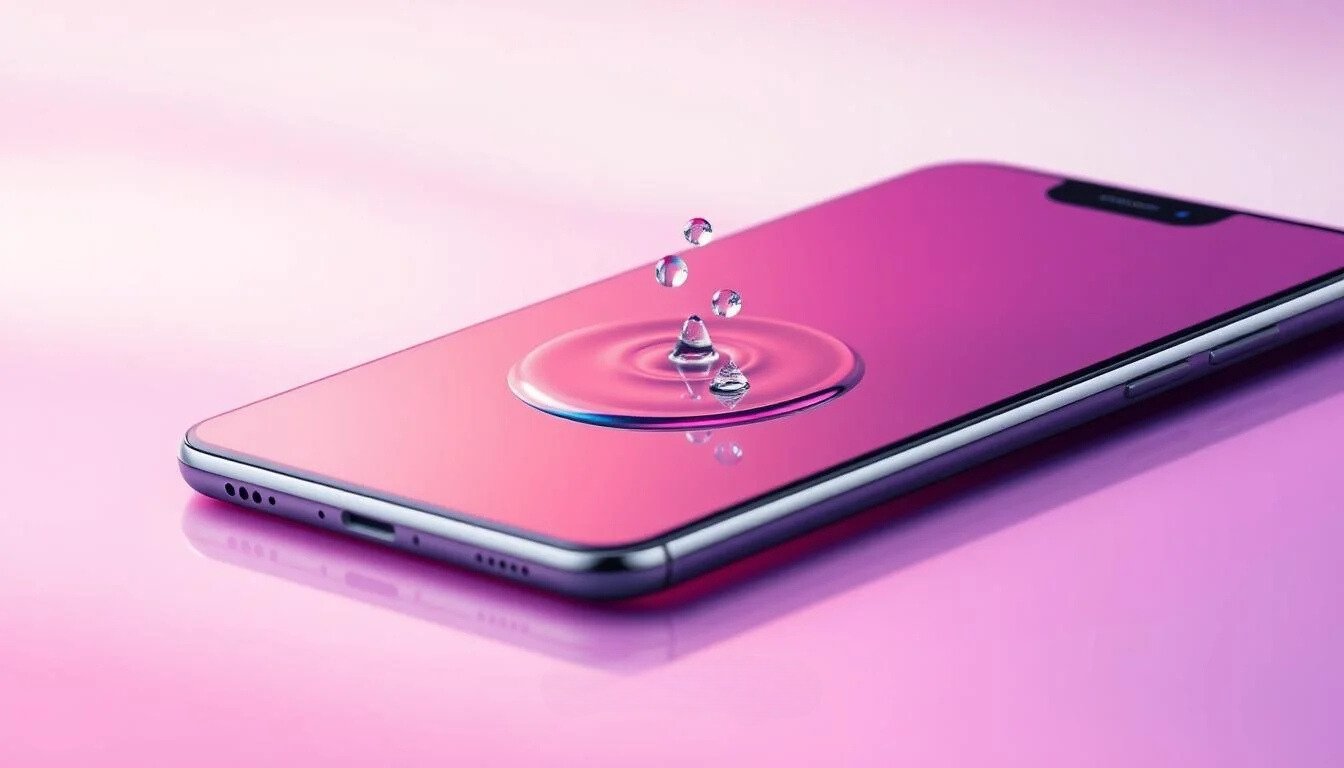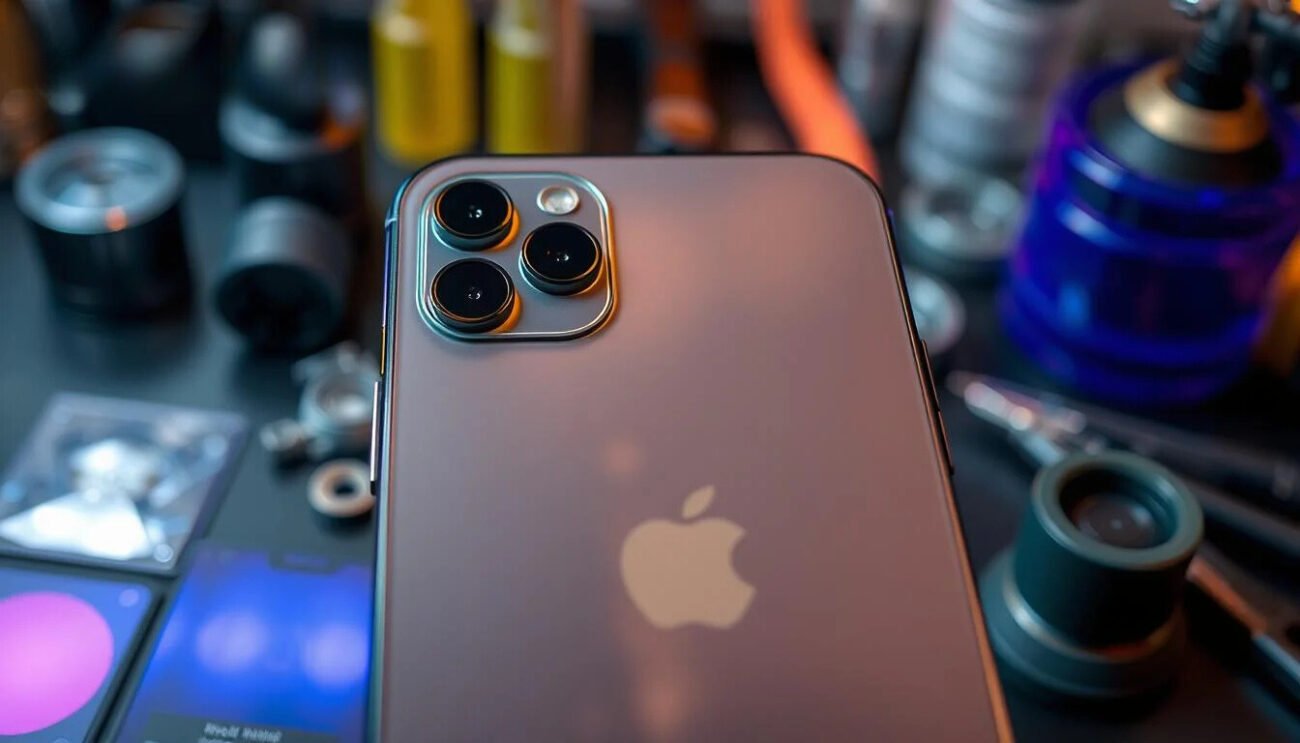In the ever-evolving world of mobile technology, the importance of screen protection has become paramount. As our devices become increasingly central to our daily lives, the need to safeguard their delicate displays has never been more critical. But what is the secret behind the seamless, smudge-free experience we’ve come to expect from our smartphones and tablets? The answer lies in a remarkable technology known as oleophobic coating.
Have you ever wondered why your device’s screen seems to repel fingerprints, oils, and liquids with such ease? The key lies in the intricate molecular structure of oleophobic coatings, which form a microscopic barrier that prevents these unwanted substances from adhering to the surface. But how exactly does this technology work, and what are the benefits it offers for modern device owners? Dive into this comprehensive guide to uncover the science behind oleophobic coatings and discover how they can transform your screen protection experience.
Key Takeaways
- Oleophobic coatings create a microscopic barrier that repels oils, fingerprints, and liquids on device screens.
- This technology enhances screen clarity, touch sensitivity, and overall device performance by preventing smudging and liquid damage.
- Proper maintenance and reapplication are crucial to maintain the effectiveness of the oleophobic layer over time.
- Oleophobic coatings represent a significant advancement in screen protection, offering superior protection compared to traditional screen protectors.
- The science behind oleophobic coatings involves the interaction between surface tension, molecular structure, and liquid repellency.
Understanding Oleophobic Coating Technology
Chemical Properties and Composition
Oleophobic coatings are typically composed of fluorinated polymers, which possess a unique molecular structure that allows them to effectively resist the adhesion of oils and other hydrophobic substances. These polymers are engineered to form a thin, invisible layer on the screen’s surface, creating a barrier that prevents liquids from spreading and leaving behind pesky residues.
How Oleophobic Molecules Work
The key to the oleophobic coating’s success lies in its ability to alter the surface tension of the screen. The fluorinated polymers within the coating have a lower surface energy than the screen’s natural surface, causing liquids to bead up and easily roll off the surface. This hydrophobic effect not only repels oils but also helps maintain the screen’s visual clarity and touch sensitivity.
Evolution of Screen Protection Methods
The development of oleophobic coatings represents a significant advancement in screen protection technology. Prior to these nanocoatings, users often relied on traditional screen protectors or cleaning methods to maintain their device’s display. However, oleophobic coatings have revolutionized the way we interact with our screens, offering a more seamless and long-lasting solution to combat the effects of oils, fingerprints, and other contaminants.
By understanding the science behind oleophobic coatings, consumers can make informed decisions about the best ways to protect their mobile devices and enhance their overall user experience.
Benefits of Oleophobic Coating for Mobile Devices
Oleophobic coatings offer a range of compelling benefits for mobile device users. These advanced surface treatments provide superior fingerprint resistance, making it easier to maintain a clean and smudge-free screen. The easy-clean coating also simplifies the wiping process, allowing users to quickly remove oily residues and stains with a simple wipe.
One of the primary advantages of oleophobic coatings is their ability to protect against stains and smudges. By creating a hydrophobic barrier on the screen surface, these coatings repel liquids and prevent the buildup of unsightly fingerprints and smudges. This not only preserves the device’s visual clarity but also enhances the overall user experience.
| Benefit | Description |
|---|---|
| Fingerprint Resistance | Oleophobic coatings reduce the visibility of fingerprints on the device screen, maintaining a clean and pristine appearance. |
| Easy Cleaning | The hydrophobic nature of the coating allows for effortless wiping and cleaning of the screen, removing oily residues and stains. |
| Stain Protection | Oleophobic coatings create a barrier that repels liquids and prevents the accumulation of unsightly stains and smudges on the device’s surface. |
By incorporating these advanced oleophobic coatings, mobile device manufacturers are able to deliver a superior user experience, ensuring that screens remain visually appealing and easy to maintain, even with frequent use.
The Science Behind Hydrophobic Surface Protection
Unraveling the mysteries of hydrophobic surfaces, the science behind their remarkable liquid repellent properties is truly captivating. At the heart of this phenomenon lies the interplay between surface tension and microscopic structure, creating a self-cleaning, anti-smudge shield for our beloved devices.
Surface Tension and Liquid Repellency
The secret to hydrophobic surfaces lies in their ability to minimize the contact between liquids and the material. This is achieved through the science of surface tension, where the intermolecular forces within a liquid create a “skin” that resists penetration. By engineering surfaces with a specific microscopic structure, we can harness this principle to repel liquids, whether they are water, oils, or even fingerprint smudges.
Microscopic Structure Analysis
Delving deeper, the magic of hydrophobic coatings is found in their intricate microscopic structure. These surfaces are designed with a textured, rough pattern that mimics the lotus leaf, often referred to as the “lotus effect”. This unique arrangement of microscopic protrusions and valleys creates a cushion of air, preventing liquids from fully wetting the surface and allowing them to simply roll off, taking any dirt or debris with them.
Interaction with Different Liquids
- Water: Hydrophobic surfaces repel water, causing it to form beads that easily slide off the surface, leaving a clean, dry finish.
- Oils: The same principles apply to oily liquids, such as fingerprint smudges and other greasy contaminants, which are effortlessly shed from the surface.
- Mixed Liquids: The advanced anti-smudge technology of hydrophobic coatings also excels in shielding against complex liquid mixtures, ensuring a pristine, self-cleaning screen for all your device interactions.
By understanding the intricate science behind hydrophobic surface protection, we can appreciate the remarkable capabilities of these coatings in shielding our beloved mobile devices from the daily challenges of liquid exposure and smudging. This knowledge paves the way for a future where our screens remain spotless and our touch interactions seamless.
Anti-Smudge Technology in Modern Devices
Smartphones and tablets have become an integral part of our daily lives, and the way we interact with their screens has evolved significantly. One key advancement in screen technology is the development of anti-smudge technology, which helps to minimize the appearance of fingerprints and enhance overall screen clarity.
The secret behind this anti-smudge feature lies in the use of oleophobic coatings. These specialized coatings are applied to the device’s screen, creating a slippery surface that repels oils and fingerprints. This fingerprint resistance not only improves the visual appeal of the screen but also helps to maintain its clarity over time.
| Feature | Device with Oleophobic Coating | Device without Oleophobic Coating |
|---|---|---|
| Fingerprint Resistance | High | Low |
| Screen Clarity | Maintained | Diminished |
| Cleaning Effort | Reduced | Increased |
The anti-smudge technology employed in modern devices not only enhances the user experience but also helps to preserve the device’s appearance and resale value. As the industry continues to evolve, we can expect to see even more advanced oleophobic coatings and screen protection technologies that will further improve the overall performance and longevity of our mobile devices.
How Oleophobic Coating Enhances Device Performance
Oleophobic nanocoatings play a crucial role in enhancing the overall performance of mobile devices. These innovative screen protection technologies not only safeguard your device but also contribute to improved user experiences. Let’s explore how oleophobic coatings can elevate your device’s capabilities.
Impact on Touch Sensitivity
The oil-resistant finish provided by oleophobic nanocoatings ensures smooth and responsive touch interactions. By repelling fingerprints, oils, and smudges, these coatings maintain the screen’s sensitivity, allowing for precise and seamless navigation. This enhanced touch sensitivity translates to a more intuitive and efficient user experience, particularly for tasks that require intricate gestures or detailed control.
Visual Clarity Improvements
Oleophobic coatings also contribute to significant improvements in visual clarity. By preventing the accumulation of oils and fingerprints, these nanocoatings keep your device’s screen consistently clear and free from unsightly blemishes. This enhanced visual clarity enhances the overall viewing experience, whether you’re enjoying multimedia content, browsing the web, or simply navigating your device’s interface. Similarly, ensuring that your fingerprint sensor is properly calibrated can improve the accuracy and responsiveness of your device’s security features. If you’re experiencing issues with your fingerprint sensor, check out this helpful guide on fingerprint sensor calibration and quick solutions.
Durability Factors
In addition to touch sensitivity and visual clarity, oleophobic nanocoatings also play a crucial role in enhancing the overall durability of your device. The oil-resistant finish helps protect the screen from scratches, abrasions, and other wear and tear, ensuring your device maintains its pristine condition for longer. This improved durability translates to a longer lifespan for your device, making it a worthwhile investment in screen protection.
| Oleophobic Coating Feature | Benefit |
|---|---|
| Oil-resistant finish | Improved touch sensitivity and visual clarity |
| Scratch and abrasion resistance | Enhanced durability and longer device lifespan |
| Repels fingerprints and smudges | Maintains a clean, professional appearance |
By leveraging the power of oleophobic nanocoatings, you can elevate your device’s performance and enjoy a seamless, long-lasting user experience. From enhanced touch responsiveness to improved visual clarity and superior durability, these screen protection technologies are designed to optimize your mobile device’s capabilities.
Professional vs. DIY Oleophobic Coating Applications
When it comes to protecting your device’s screen from smudges, fingerprints, and water stains, the choice between professional oleophobic coating services and DIY application kits can be a tricky one. Both options have their advantages and disadvantages, and the best choice will depend on your specific needs and preferences.
DIY Oleophobic Coating Kits
DIY oleophobic coating kits are a more affordable and accessible option for those who prefer to take matters into their own hands. These kits typically come with a simple application process and can be a great choice for those who don’t have access to professional services or want to save money. However, the quality and longevity of the hydrophobic surface may not be as reliable as professional treatments.

When deciding between professional and DIY oleophobic coating applications, it’s essential to consider factors like cost, effectiveness, and the specific needs of your device. For high-value devices or those that require long-term protection, a professional service may be the better choice. DIY kits, on the other hand, can be a practical solution for budget-conscious users or those who prioritize convenience over maximum protection.
Maintaining Your Device’s Oleophobic Layer
Preserving the effectiveness of your device’s oleophobic coating is crucial for maintaining optimal screen stain protection, self-cleaning surface, and liquid repellent properties. By following these simple yet essential guidelines, you can extend the lifespan of this specialized coating and enjoy a pristine, smudge-free display.
Cleaning Best Practices
Proper cleaning techniques are key to keeping your oleophobic coating in top condition. Avoid using abrasive materials, harsh chemicals, or excessive force when wiping your screen. Instead, opt for a microfiber cloth or a specialized screen cleaning solution designed for coated displays. Gently wipe the surface, taking care not to rub or press too hard. If you ever need to reboot your device to refresh its settings or resolve issues, check out this quick guide on how to reboot your phone for all types of devices.
Signs of Coating Wear
- Increased smudging and fingerprints on the screen
- Reduced liquid repellent properties, with liquids no longer beading up on the surface
- Decreased touch sensitivity or responsiveness
- Noticeable haze or loss of self-cleaning surface clarity
Reapplication Guidelines
If you notice any of the above signs of wear, it may be time to reapply the oleophobic coating. Consult your device manufacturer or a professional screen protection service for guidance on the appropriate reapplication process. Failing to maintain the coating can lead to decreased screen performance and susceptibility to scratches, smudges, and other types of damage.
By following these best practices, you can ensure your device’s oleophobic layer remains effective, providing long-lasting stain protection, self-cleaning surface, and liquid repellent benefits. Proactive maintenance is the key to preserving the pristine, smudge-free appearance of your screen.
Common Misconceptions About Nanocoating Technology
The world of nanocoating technology is often shrouded in misconceptions, and it’s crucial to separate fact from fiction. While nanocoating, hydrophobic surface, and anti-smudge technology are powerful tools for device protection, they are not invincible. Let’s explore some common myths and shine a light on the realities of these advanced coatings.
One common misconception is that nanocoatings are permanent and impervious to wear and tear. In reality, these coatings can degrade over time, especially with frequent use and exposure to various environmental factors. Regular cleaning and occasional reapplication may be necessary to maintain the optimal performance of these protective layers.
Another myth is that nanocoatings offer absolute protection against all types of smudges, fingerprints, and liquid spills. While these coatings do enhance a device’s anti-smudge properties and hydrophobicity, they are not a foolproof solution. Certain liquids or stubborn residues may still adhere to the surface, requiring gentle cleaning techniques to restore the coating’s effectiveness.
“Nanocoatings are not a magic shield that renders devices completely immune to the challenges of daily use.”
It’s also important to understand that the performance of nanocoatings can vary depending on the specific formulation and application process. Not all nanocoating products are created equal, and their effectiveness may differ based on factors such as the materials used, the manufacturing process, and the device’s surface characteristics. For example, if you’re considering a Huawei device, it’s essential to be aware of how different coatings might perform on various models. You can learn more about Huawei mobile devices and their unique features in this detailed guide on Huawei mobiles.

Emerging Materials and Methods
Researchers are exploring innovative materials and application techniques to create the next generation of self-cleaning and highly durable oleophobic coatings. These advancements aim to provide even greater resistance to fingerprints, smudges, and liquid spills, delivering a truly hassle-free screen experience.
- Graphene-based coatings: Leveraging the exceptional properties of graphene, scientists are developing ultra-thin, yet highly effective oleophobic layers that can be applied to a variety of screen surfaces.
- Nanocomposite formulations: By combining advanced polymers and nano-scale additives, researchers are crafting oleophobic coatings with enhanced durability and self-healing capabilities.
- Plasma-assisted deposition: Innovative application methods, such as plasma-assisted deposition, are enabling the creation of oleophobic layers with superior adhesion and long-lasting performance.
Industry Innovations
Leading device manufacturers and technology companies are investing heavily in the development of next-generation screen protection solutions. These industry-driven innovations are poised to redefine the boundaries of what is possible in the realm of oleophobic coatings and liquid repellent surfaces.
- Adaptive Oleophobic Coatings: Smart oleophobic coatings that can dynamically adjust their properties based on environmental conditions or user interactions, providing optimal protection in diverse situations.
- Self-Cleaning Surfaces: Advanced oleophobic layers that can actively repel and shed dirt, dust, and other contaminants, maintaining a pristine screen appearance with minimal user intervention.
- Multifunctional Coatings: Oleophobic coatings that not only offer superior liquid repellency but also incorporate additional features, such as anti-glare, UV protection, or even self-healing capabilities.
As the demand for high-performance screen protection continues to grow. The future of oleophobic coating technology promises to deliver innovative solutions that redefine the way we interact with our mobile devices.














































